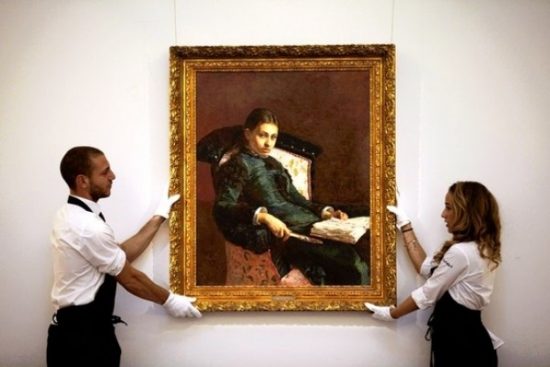Helpful Packing Tips for Two Dimensional Framed Art
There could be many reasons you need to pack your own art. You are moving into a new home, shipping the work out as a gift, or simply putting the work in storage. Whatever the reason, there are a number of disasters that can occur from the work getting damaged to even lost which could be a mixture of fault. That is why it is always best when moving to hire professional movers, and best to take it to professional shippers when shipping, but sometimes that is just not possible and so below please find some helpful suggestions for packing your art.
For Storage (No Box):
1. If the work if glazed with glass or plexi, you should tape the front with painters tape so if anything should happen to the work the tape will catch the broken pieces helping to prevent serious damage to the artwork beneath. The taping of the glass or plexi should be in vertical and horizontal rows, followed by diagonals across the work.
2. If the work is not glazed, then you will need to protect the image by placing an archival foam core or cardboard sheet wrapped in archival paper in front of the work (i.e. resting top of the inner fillet of the frame) so as to prevent any of the other packing materials from causing harm.
3. After the front is properly protected, palette tape (similar to plastic wrap) can be your best friend. Wrapping a protective coating around your art can protect the art and frame against scratches and scuffs, but it is not necessary. ***When using palette tape you should always start wrapping on the back of the artwork as it makes sure the front is protected with smooth, straight rows of plastic.
4. Bubble wrap however is your best friend when packing art for storage as it both cushions the art and fills space, preventing unwanted movement. You will want to wrap the artwork as many times as you are comfortable with, which depends on your storage situation. *** In addition you can always cut out squares of bubble wrap and cup them around the frame corners before bubble wrapping the whole work as this gives extra protection to those delicate edges .
5. Once the bubble wrap is on, packing tape is great to have to seal everything up and make sure none of the protection shifts.
6. If you do want extra protection, you can use flat cardboard sheets for extra padding around the bubble wrap by sandwiching the bubbled up artwork in between them and taping it all together.
Shipping/Storage with Box:
1. In regards to protecting the work for shipment, the suggestions are the exact same as for storage without a box.
2. Once the bubble wrap is on in the artwork, it both cushions the art and fills space, preventing unwanted movement within your packaging. When shipping paintings, bubble wrap should be your filler of choice. Never use Styrofoam peanuts when shipping paintings as they can cause serious damage to the work.
3. If you do want extra protection, you can use inner cardboard for the shipment. These are flat cardboard sheets that provide extra padding around the bubble wrap. This is created by sandwiching the bubbled up artwork in between the flat cardboard layers and taping it all together. If you do this however you will need to add another layer of bubble wrap around the inner cardboard as it will fill the space between the inner and outer cardboard. ***Flat cardboard sheets are also great for creating customized boxes and corner protectors for the frame.
4. To pack and store paintings, box sizes that are good are: 28” x 4” x 24; 37” x 4 3/8” x 30”; 36” x 6” x 42” . If the sizes are not quite right then you can do what is called telescoping where you slide two boxes together to make a larger box. With a little surgery you can even slide four boxes together to accommodate still larger pieces.
There you have it, the artwork is packed and ready to be shipped or put into storage. Although this entry addresses framed works of art, if your work of art is a two dimensional unframed piece then simply ship it or store it flat, wrapped in archival paper in a cardboard or wood portfolio. Never roll artwork for any reason as it damages the paper and image.
Disclaimer
While the advice I share does come from years of experience, there are no guarantees in the arena of packing for art storage or shipping. Artwork gets damaged quite easily and these techniques are simply some that I’ve employed to great success. Each work of art is unique and needs to be accessed as such in terms of care, storage, and shipping. Never do anything that gives you pause to feel uncomfortable.




